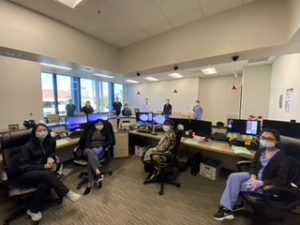RetinaLink’s Staying the Course is pleased to feature Charles WG Eifrig, MD, FACS. Dr. Eifrig practices at the Retina Associates of Orange County in Laguna Hills, Santa Ana and Newport Beach, California. He operates primarily at three ambulatory surgery centers (ASC) in Orange County (LaVeta, Barranca, Surgical Center of Saddleback) in addition to two hospitals — St. Joseph Hospital, Orange County Global Medical Center.
Today, Dr. Eifrig shares how things have changed since the COVID-19 pandemic started. He said, “we are fortunate in the retina world since we can still treat our patients and make a difference in their lives.Many of our Ophthalmology friends and physician colleagues are completely shut down at this time which is impactful to their patients. Our colleagues on the front lines, Emergency Room, ICU, Infectious Disease and Anesthesia, are truly heroes.”
RetinaLink (RL): Are you seeing patients and operating? If so, how has COVID-19 impacted your clinical and surgical volume?
Charles WG Eifrig (CE): I work at all three offices currently, Laguna Hills, Santa Ana and Newport Beach. The number of patients we see daily fluctuates but two weeks ago, our volume was down 40 to 50%. Now, we are down 60 to 70% clinically and surgically.
RL: How has your clinical protocol changed?
CE: Initially, very few patients wore a mask. Now, 95% of our patients are wearing a mask (we encourage all). In the clinic, I wear my KN95, N95 or standard surgical mask and breathing can be quite different. It does take time to get used to it. Examining patients at the slit lamp can be more challenging especially with the fogging from patient’s masks. I try to do indirect ophthalmoscopy on most patients when appropriate (not to mention the social distancing issue with slit lamp exam). We have added double slit lamp breath shields as well.


Dr. Eifrig’s staff demonstrate social distancing
Patients are dropped off and family or caregivers wait outside. There is minimal sitting in our waiting area, if any. Overall, efficiency has been significantly improved (mainly because of fewer patients). Before the pandemic, family members would have questions and we, all, know it takes time to answer their questions. I do believe the retina space is blessed however because we can still take care of our patients outlined in the ASRS guidelines. I had one patient recently who is taking chemotherapy and she skipped her chemotherapy appointment to ensure she received her IVI. She wants her vision most of all.
RL: Please outline your surgery days and safety precautions.
CE: I only operate on emergent or urgent cases outlined by the ASRS. I’m in a unique situation since I operate at two different hospitals and three different ASC’s so I have some flexibility. 95% of my surgery is in the ASC’s. In the last six weeks, I now only go to two of the ASC’s (one is now closed). No patients are intubated and currently, I wear a normal surgical mask. My patients wear a mask and they are draped.
RL: What do you do when you get home?
CE: I’m home earlier than I’ve ever been. I immediately take my shoes off, go to the shower and put my scrubs in a special location to be washed. The other thing I immediately do is disinfect my phone.
The other day my son said, “Wow, you’re home early which is great.” We have family dinners earlier, play cards, board games, ping pong and watch TV, movies and documentaries together. We set up a gym in the garage so everyone can get exercise. We also like to hit the golf ball around in the backyard.
Dr. Eifrig can be reached via e-mail – [email protected]

